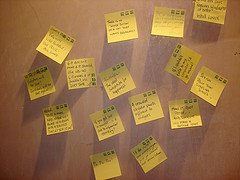
Twelve Simple Rules of Systems Thinking for Complex Global Issues
Louise Diamond, Ph.D.
The study of living systems – through biology, physics, mathematics, cybernetics,
ecology, complexity theory, chaos theory, systems theory, and other sciences – helps us understand the world we live in and how we can better navigate its rich, if sometimes daunting, complexity.
Our human systems at various levels of organization – the individual, families,
communities, affinity groups, organizations, nations, international entities, etc. – all exhibit the common dynamics of living systems.
We are increasingly aware that all our living systems – human and natural – are at risk today, as we face incredibly complex and interconnected challenges related to global security, environmental degradation, and inter-woven economies. Understanding the nature and dynamics of living systems, therefore, can shed light on how we think about our problems and our resources, and about the assumptions and the choices we make.
What follows are 12 basic concepts about living systems and their implications for policy considerations when dealing with some of our greatest and most difficult challenges.
Each ‘therefore,’ though stated simply, can be expanded out to include several other key concepts and implications for action.
Simple Rules:
1. In complex systems, all the elements or agents are interconnected, as in a giant
web. They are also interdependent – what happens to one affects all others.
Therefore: Connect the disconnected.
2. Complexity is the nature and condition of living systems and the world we live in.
What we know about complex systems is that there are multiple agents or
elements, combining and interacting in unpredictable and non-linear ways. This
means decisions often lead to unintended consequences. Therefore: Ground
yourself in unpredictability.
3. In that giant web of interconnectedness, the points or nodes where the agents meet
are the relationships, or opportunities for interaction. These interactions
determine what will happen to the system. The nature and quality of these
relationships, therefore, are critically important. Therefore: Create conditions
for quality engagements.
4. We know that all living systems exchange energy, matter, and information across
their boundaries. At any time there can be imbalances in these flows, stuck
places, over- or under-accumulation, etc. Therefore: Re-balance the flows
across boundaries.
5. All living systems develop patterns. Often these patterns are self-reinforcing and
become deeply embedded and difficult to change. Many of these patterns in
human systems are common and recognizable. Patterns also show up in similar
forms at different scales or levels of the system. Therefore: Re-pattern for
sustainability and well-being of the whole.
6. We know from living systems that everything is a whole in itself and at the same
time part of a larger whole. Therefore: Attend to ever smaller parts and ever
larger wholes.
7. Living systems self-organize through the interactions of their agents or parts. The basic format of that organization is networks – that is, groups of parts joined
together in a de-centralized way for some period of time. Therefore: Pay
attention to emerging networks.
8. Systems move between various degrees of stability and instability, order and
disorder. When the disorder, or chaos, becomes too great, things fall apart. When
the order is too rigid, things cannot grow or develop. Yet a certain degree of
instability, or the edge of chaos, can also be a powerful moment of creative
change. Therefore: Seek coherence within chaos.
9. All living systems exist within a single field of potential, where the observer is a player, our thoughts have consequences, and creative solutions emerge.
Therefore: Play the Field.
10. Living systems exist within their own unique context. For human systems, that
context is the narrative that gives meaning to our choices and actions. Therefore:
Articulate, communicate, and validate the stories you tell yourself.
11. The parts of living systems cohere around a common shared purpose. Therefore:
Define and revisit goals and purpose.
12. Living systems are learning systems. That is, they adapt from the feedback they
receive from their internal and external environments. Therefore: Learn and
change from inner and outer messages.
Alejandro Beeche Van der Laat










